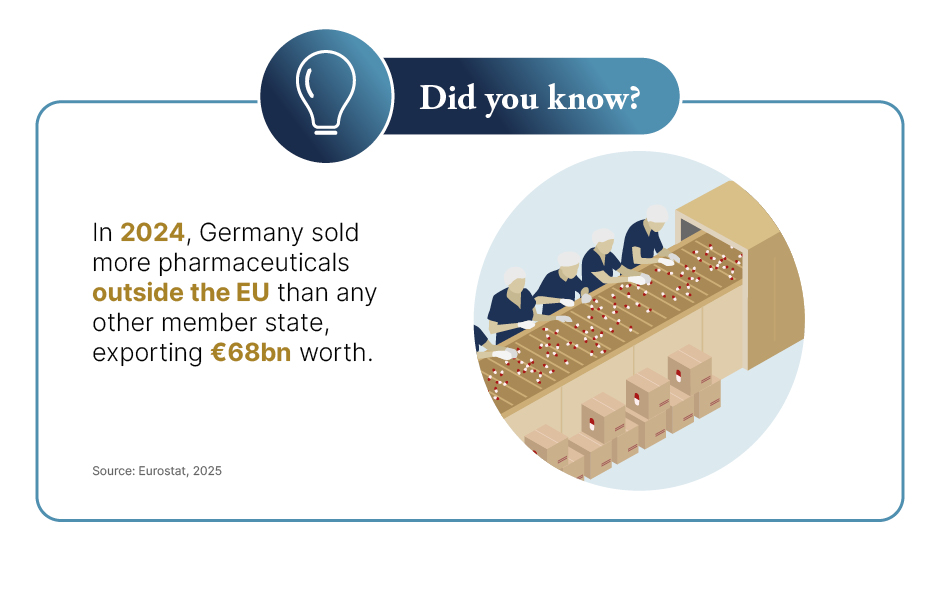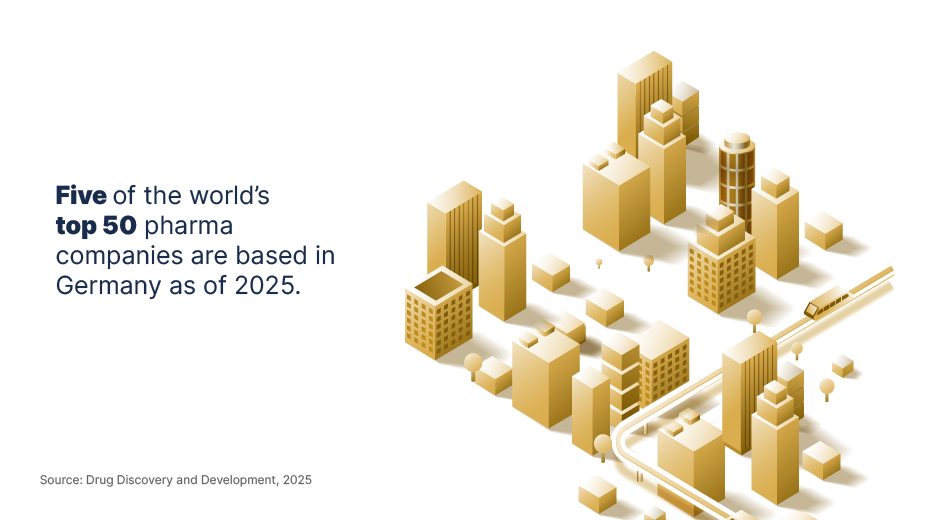Germany’s pharmaceutical sector has the research, investment and access to reclaim its innovation crown – if it can tackle financing, regulation and other key hurdles
Words by Jade Williams
Germany has long been a cornerstone of pharmaceutical innovation, and in the late nineteenth century to World War I, it was even described as the “pharmacy of the world”. That legacy is not lost in 2025. Yet as healthcare evolves – with seismic shifts in technology, regulation and global competition – the German pharma sector finds itself at a pivotal crossroads.
There is a dual focus for the industry to tackle: retain Germany’s historical strength in production and secure a renewed position as an innovation hub. Médard Schoenmaeckers, General Manager, Germany, Boehringer Ingelheim, describes the challenge with clarity: “We want Germany to become the most innovative market again in chemistry, pharma and biotech… If not now, when?”
A legacy of strength
Germany’s role in shaping modern medicine is hard to overstate. For decades, its pharma landscape has been built on deep capabilities in academia, manufacturing and government backing.
In 2023, Germany launched its National Pharma Strategy, which was further developed through the Medical Research Act, with the aim of boosting pharma research, production and innovation to make the country a globally competitive hub. That, combined with its strong heritage, has produced real industrial scale: in 2024 Germany exported €68bn of pharmaceuticals outside the EU, and five of the world’s top 50 pharma companies are currently headquartered in the country. These achievements point to both industrial clout and scientific muscle.
As Schoenmaeckers puts it: “One could say Germany is a very grown-up start-up. All the building blocks are there: strong universities, strong research institutes, research and production capacity, and with the national pharma strategy, now, the political will.”

Signals of renewal
There are strong signals that Germany is moving beyond legacy strength and investing in tomorrow. Companies such as Boehringer Ingelheim are committing billions to research and infrastructure in Germany. “We’re currently at an annual investment level of about €3.2bn in Germany, €2.6bn in R&D and €600m Capex investments,” Schoenmaeckers highlights. “That shows Germany is not only a strong production hub, but also an innovation hub.”
The growth outlook looks healthy too: the pharma sector is projected to expand at a CAGR of 5.3% from 2025 to 2030, driven by advances in biotechnology and personalised medicine.
Alongside investment and research capacity, Germany’s patient access environment is a clear advantage. Richard Maughan, Senior Director and Head, UK Policy and Public Affairs, Pfizer, contrasts the two markets on the EMJ GOLD Podcast: “Around 37% of medicines are fully available to patients in England, whereas in Germany it’s more like 90%.” Quick availability creates an ecosystem where new drugs can achieve uptake quickly, which in turn encourages companies to invest and innovate.
Germany is not only a strong production hub, but also an innovation hub
Cracks in the system
But momentum is not guaranteed. Looking more broadly, Europe faces a structural challenge when it comes to financing biotech, and Germany is not immune. Stefan Oelrich, President, Bayer, and Head, EFPIA, summed up the problem earlier this year when he told EuroNews: “We need the equivalent of a Nasdaq in Europe where we can raise capital for biotech. Because biotech is not just about government finance.” Without deeper private capital markets like Nasdaq in the US, growth can be slower and riskier in Europe.
On top of financing, Germany has been criticised for relative sluggishness in areas such as clinical trials and digital health adoption. As Schoenmaeckers admits: “We need more flexibility in our system to create that same attractiveness again – e.g. for clinical studies.” There is also the ever-present pressure of cost containment, which could begin to erode the rapid patient access that currently sets Germany apart.
Data access is another thorny issue. Schoenmaeckers points to anonymised patient data as an accelerator for research: “Access to anonymised patient data would accelerate research and generate the evidence we need – and ultimately benefit patients.” The challenge is to reconcile strict privacy frameworks with the infrastructure and governance required to use this data at scale.

The road ahead
Germany’s pharma sector is not just a national asset but a European one. With its size, research strength and industrial base it has the potential to lead Europe’s response to intensifying global competition in pharma. “Germany can take a front leader role in Europe,” argues Schoenmaeckers. “Europe needs to play its part in the global pharma market alongside the US and China.”
The will is there and the urgency is felt, he says: “It should take very little now to grasp the opportunity.” If Germany can combine robust investment, regulatory flexibility, better access to data and new financing pathways, it can turn its legacy into renewed leadership.
Germany can take a front leader role in Europe









